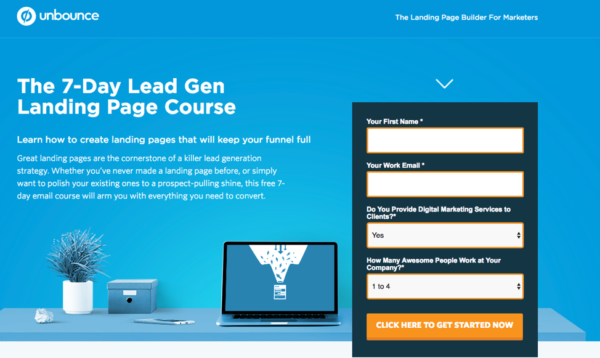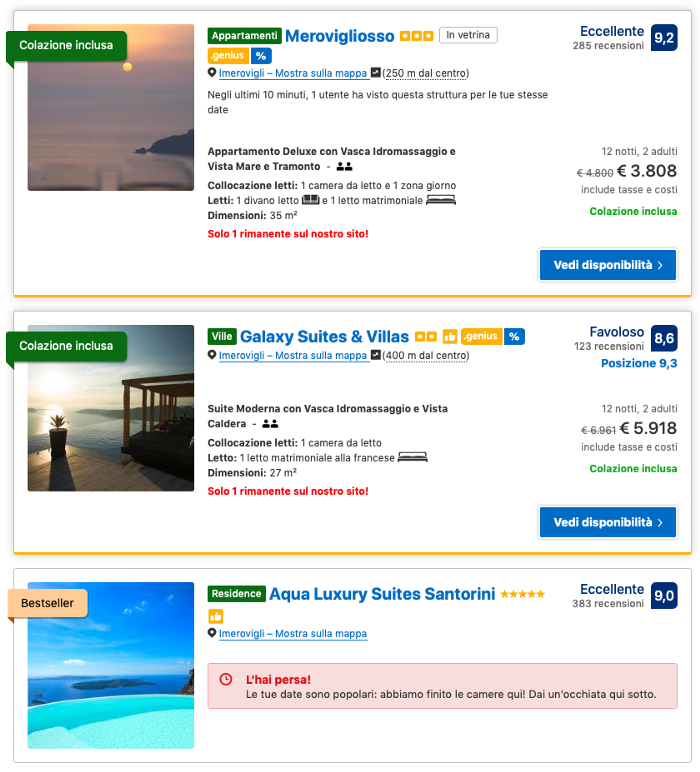Convert more leads and sales using in the right way the Cialdini’s principles through some examples explained here.
The 6 principles of persuasions
- Reciprocity
- Scarcity
- Authority
- Commitment
- Liking
- Consensus (or social proof)
1. Reciprocity
It’s based on simple human psychology: we hate to feel indebted to other people! When people do things for us, we feel obliged to repay them. The inner tension created in the gap between receiving and giving is often so powerful we will give anything in return just to reduce this discomfort.
– Example: create a landing page where in exchange for an email address, you’ll share a piece of interesting content with your lead.

Some interesting resources
I found an interesting article on Awwwards about the science behind a landing page design, that explains how the different A/B testing based on colors and text formatting can change the conversion rate.
Some guides for building a landing that converts, you can find on Unbouncewebsite checking out this link.
2. Scarcity
In 1975, three researchers, Worchel, Leee Adewole, wanted to find out how people rated cookies in two identical glass jars. One jar contained ten biscuits, while the other contained only two.
Which cookies would people like the most?
The biscuits of both vases were identical, but the participants attributed a greater value to those in the almost empty vase.
The scarcity appearance affect their perception of value
This example is extracted from the book I read, “Hooked” by Nir Eyal that explains the different methods used in Silicon Valley today to engage new customers through psychological circle hooks.
Scarcity works through anticipated regret, where we think about the future and see ourselves regretting having not taken a decision to act. When we think about the future, we not only anticipate events, we also experience the associated emotions. This present emotion then drives present decisions.
– Example: create a countdown, on the website, e-commerce or whatever, and promote an interesting discount within that time.
There are several methods you can put in place about this persuasion:
Time-based scarcity
You can found out in Groupon and eBay product pages, for instance.

Stock scarcity

3. Authority
An authority figure among young women shoppers, for example, Jennifer Aniston, is going to see whatever she’s her outfit or what is her latest pair of shoes. Her endorsement regarding a product, in line with the feeling and interesting of the audience, could have a great impact on sales and brand awareness.
– Example: you need to involve a VIP or important influencer, in the niche where you’re interested to invest or promote a product for creating partnership/sponsorship with him/her to obtain a growth sales.

There are three factors that trigger the authority principle, and you can use to promote your e-commerce products:
- Titles — Dr., Prof., Ph.D., President, Chairman, Founder, CEO, Industry experts;
- Clothes — Uniforms, Suits, religious outfits;
- Trappings — Accessories that go along with certain positions/roles (e.g. police badges, expensive suits, nice cars, etc.).
4. Commitment
We human beings have a deep need to be seen as consistent. This can be explained, from a psychological perspective, by the fact that people have established that commitment as being in line with their self-image.
An important factor in the persuasion that uses this principle is that the person feels they have made a free choice. If they feel coerced or obliged, they can explain their choice by saying they were ‘forced’ into the decision.
When they believe they have made a free choice, they feel personally responsible for their decision and seek to justify it.
– Example: a customer that used a free samples finds out, once used the item, feels more inclined to buy it.

In the example above, you can see the YES button in red color with little descriptive information to tempt the customer’s choice.
After the newsletter signup, you can proceed to create a nurturing workflow to engage your leads moving on next stage.
5. Liking
It’s based on sharing something you like with people in your circle.
This principle can be applied to conversions in the following way:
a company that wants to boost its conversions simply has to focus on creating impressive content for their customers in order to engage to share it.
– Example: a simple “About Us” page well crafted could be an interesting hook for engagement because its content can tell to potential buyers the similarities between the company and them.

Lists of 5 factors that power the principle of Liking that you can use in your e-commerce to boost conversion:
- Physical attractiveness — honesty, humor, trustworthiness
- Similarity — we like people similar to us in terms of interests, opinions, personality, background. Good salespeople will often mimic your accent, phrasing, and/or body language to gain your trust and make a deal.
- Compliments — we love to receive praises and tend to like those who give it.
- Contact and Cooperation — we like people who want to help.
- Conditioning and Association — we like people who share our values.
6. Consensus or social proof
It works through our needs to be respected by others and to avoid social regrets such as be ridiculed.
In a famous experiment, Solomon Asch showed a group of people three lines and asked which was the shortest. What the experimental subject did not know was that everybody else was in a stooge. When they all chose the wrong answer, most subjects also chose the wrong answer rather than face being different.
– Example: an advertiser shows a happy family in selling goods to people who are likely to have families.
